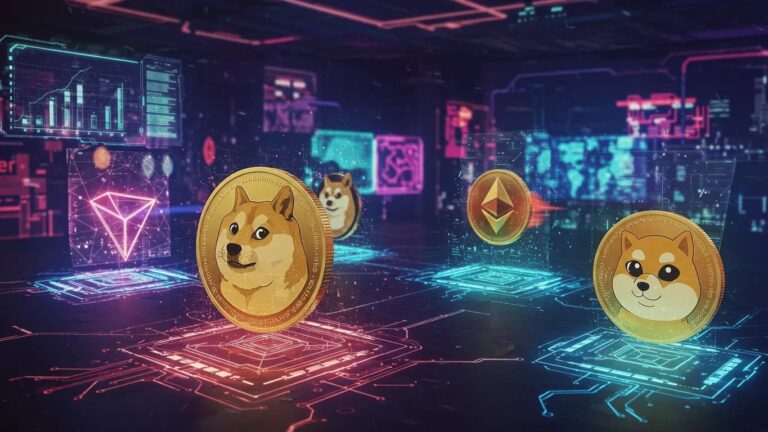
Avalanche (AVAX) is an advanced blockchain platform designed to revolutionize the execution of smart contracts. As a layer 1 (L1) network, it provides integration with sidechains and supports layer 2 (L2) solutions, which are collectively referred to as subnets. This innovative platform is positioning itself as a serious alternative to Ethereum, which is often referred to as “alternative Tier 1” or “alternative L1”.
What sets Avalanche apart is its compatibility with Ethereum, allowing decentralized applications ( dApps ) to move seamlessly between the two platforms. The Avalanche ecosystem has seen significant growth in 2021, with the number of average daily transactions increasing by 470% and its own cryptocurrency token AVAX increasing by over 3300%.
The platform’s main strengths lie in its lower fees and faster transaction speeds compared to Ethereum, as well as its ability to process around 4,500 transactions per second, depending on the subnet. This is in stark contrast to Ethereum’s throughput of less than 20 transactions per second. These features, combined with near-instantaneous transaction completion, make Avalanche a highly scalable and efficient blockchain network.
AVAX, Avalanche’s proprietary token, plays a critical role in maintaining the integrity of the network. It is used for transaction fees, network security and as the basic unit of account between the various blockchains in the Avalanche network. Avalanche’s governance model determines transaction fees and the rate of AVAX coin creation, further emphasizing its user-centric approach.
Launched in 2020, Avalanche is characterized not only by its speed and scalability, but also by its commitment to security, accessibility and affordability. As an open source project, it invites community participation, allowing anyone to review and contribute to the platform’s code, creating a collaborative and transparent environment.
How does Avalanche work?
Avalanche stands out from blockchains due to its innovative architecture and consensus mechanism, offering a multi-faceted platform that goes beyond the capabilities of typical blockchain networks.
At the heart of Avalanche’s uniqueness is the consensus mechanism, a new Proof-of-Stake (PoS) approach. This mechanism involves validators who place AVAX tokens to validate transactions. Unlike traditional PoS systems, each validator in Avalanche independently validates a transaction and then selects a small subset of other validators to reach consensus. This process continues until consensus is reached, typically in less than two seconds. This unique method allows consensus to be reached quickly while maintaining a high level of decentralization and scalability. The efficiency of the network is expected to increase as it grows.
The Avalanche architecture is characterized by the use of multiple blockchains, each performing specific functions. This division of labor between multiple chains makes Avalanche extremely efficient: it can process more than 4,500 transactions per second and complete transactions in less than two seconds.
The three main chains are:
- Exchange Chain (X-Chain) : this is the default blockchain for creating and exchanging digital assets, including AVAX’s own token.
- Contract Chain (C-Chain) : facilitates the creation and execution of smart contracts, using the Ethereum Virtual Machine for inter-chain communication.
- Platform Chain (P-Chain) : this chain coordinates validators and manages the creation and operation of sub-chains (sub-networks).
Avalanche’s ability to support subnets is another distinguishing feature. Users can run specialized chains with their own rules, similar to Polkadot parachains and Ethereum 2.0 shards. These subnets are groups of nodes that validate assigned blockchains, with all subnet validators also validating the main Avalanche network.
In addition, Avalanche boasts full compatibility with Ethereum, which increases its appeal. Tokens can be transferred from Ethereum to Avalanche using Avalanche Bridge, and Ethereum smart contracts can be deployed in Avalanche using the same code. This compatibility, combined with high transaction speed and efficiency, positions Avalanche as a versatile and powerful blockchain network for dApps, NFTs and blockchain gaming.
Avalanche’s combination of a unique consensus mechanism, multiple blockchain and sub-network capabilities, and Ethereum compatibility makes it a highly efficient, scalable and versatile blockchain platform. It is designed to effectively solve the blockchain trilemma by offering a combination of scalability, security, and decentralization.
While Avalanche demonstrates several strengths such as high transaction speeds and a robust rewards structure, it also faces challenges such as fierce competition and particular problems related to the validation mechanism. The future developments and strategies of the platform will play a crucial role in shaping its position in the blockchain sphere.



